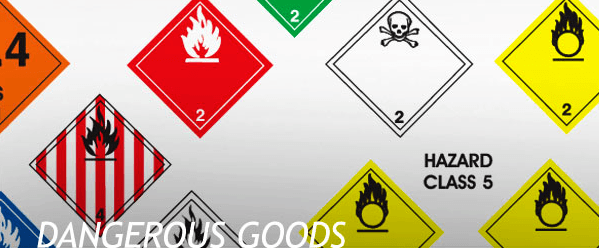F For transporters who haul caustic agents, here is a reminder of how the Environmental Protection Agency (EPA) defines hazardous waste transportation – and the basic rules pertaining to that process.
Hazardous waste transporters, according to EPA, are individuals or entities that move hazardous waste from one site to another by highway, rail, water or air. Hazardous waste transporters play an integral role in the hazardous waste management system by delivering hazardous waste from its point of generation to ultimate destination. This includes transporting hazardous waste from a generator’s site to a facility that can recycle, treat, store or dispose of the waste.
It can also include transporting treated hazardous waste to a site for further treatment or disposal.
Who are the Regulated Hazardous Waste Transporters?
Subtitle C of the Resource Conservation and Recovery Act (RCRA) defines a hazardous waste transporter as any person engaged in the off-site transportation of the hazardous waste within the United States. Off-site transportation of hazardous waste includes shipments from a hazardous waste generator’s facility or property to another facility for treatment, storage or disposal.
Transporter regulations do not apply to the on-site transportation of hazardous waste within a facility’s property or boundary. Examples of on-site transportation includes both:
Enjoying our insights?
Subscribe to our newsletter to keep up with the latest industry trends and developments.
Stay Informed- Generators and transport storage and disposal facilities (TSDFs) transporting waste within their facilities, or on their own property, and
- Transportation among geographically contiguous properties, even if the properties are separated by a public road. In contrast, transporter requirements apply to shipments of hazardous waste between non-contiguous properties that require travel on public roads.
Requirements for Transporters
Because hazardous waste transporters move regulated wastes on public roads, highways, rails and waterways, EPA and the U.S. Department of Transportation (U.S. DOT) jointly developed the hazardous waste transporter regulations.
A transporter of hazardous waste is subject to several regulations under RCRA, outlined in Title 40 of the Code of Federal Regulations (CFR) part 263, including:
– Obtaining an EPA identification (ID) number
– Complying with EPA’s hazardous waste manifest system
– Handling hazardous waste discharges
– Obeying all applicable U.S. DOT hazardous materials regulations
Transporters accepting hazardous waste from a generator or another transporter may need to hold waste temporarily during the normal course of transportation. A transfer facility is defined as any transportation-related facility, such as loading docks, parking areas, storage areas, and other similar areas where shipments are temporarily held.
A hazardous waste transporter may hold waste without a storage permit in containers at a transfer facility for 10 days or less as long as the waste is manifested and kept in U.S. DOT specification containers.
Storage in stationary containers is prohibited unless the transfer facility has a RCRA permit or interim status.
If a transporter stores waste in containers at a transfer facility for more than 10 days, the transfer facility becomes a storage facility subject to all applicable requirements for treatment, storage and disposal facilities.
Importing and Exporting Hazardous Waste and Transporters
The regulations governing imports and exports of hazardous waste are primarily found in 40 CFR part 262, subpart E,, the section for hazardous waste generators. However, transporters are required to comply with these regulations if they import hazardous waste into the United States.
There are some additional export requirements for transporters found in 40 CFR section 263.20. Transporters who transport hazardous waste out of the United States must:
- Sign and date the manifest in the International Shipments block to indicate the date that the shipment left the United States;
- Retain one copy in accordance with 40 CFR section 263.22 (d);
- Return a signed copy of the manifest to the generator; and
- Give a copy of the manifest to a U.S. Customs official at the point of departure from the United States.
Key Resources and Documents
For those interested in learning more about regulations for hazardous waste transporters, the below resources may be of help:
– 40 CFR part 263: Federal Standards for Transporting Hazardous Waste.
– Chapter Three of the RCRA Orientation Manual (III-49 for information about transporters).
– RCRA Training Module about hazardous waste transporters.
Information may also be obtained by contacting the EPA at www.epa.gov.





















